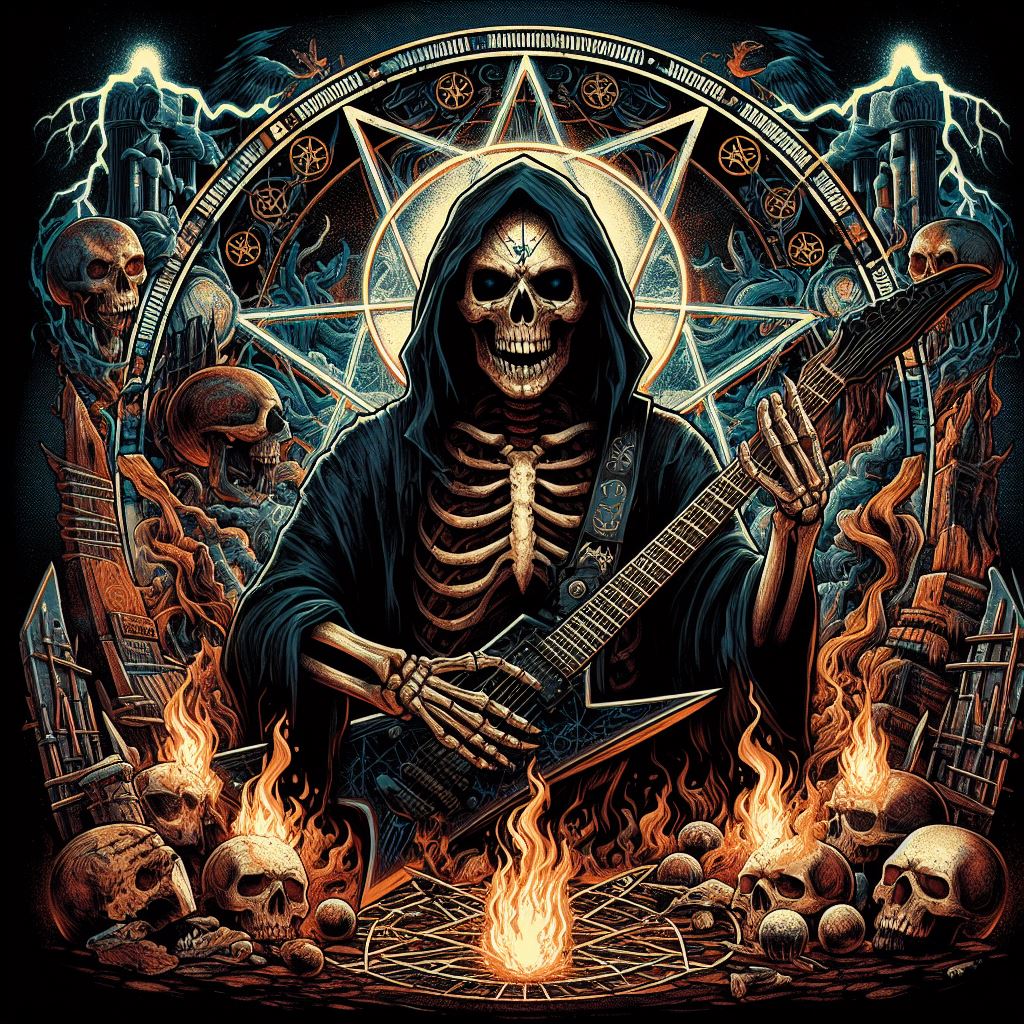Symphony X, hailing from the unlikely breeding ground of Middletown, New Jersey, carved their name into the annals of progressive metal history with a blend of technical brilliance, soaring vocals, and classical influence. Their journey, spanning over two decades, is a testament to the power of musicianship and unwavering dedication to their craft.
The Spark Ignites: Birth of a Prog Metal Powerhouse (1994-1998)
The story begins in 1994 with guitarist Michael Romeo. Fresh off the acclaim for his self-produced demo “The Dark Chapter,” Romeo set his sights on a full-fledged band. Joined by keyboardist Michael Pinnella, drummer Jason Rullo, bassist Thomas Miller, and vocalist Rod Tyler, Symphony X was born. Their self-titled debut, released in Japan in 1994 and worldwide in 1995, showcased Romeo’s virtuoso guitar work and the band’s early neo-classical leanings, reminiscent of Yngwie Malmsteen and Randy Rhoads.
The arrival of vocalist Russell Allen in 1995 marked a turning point. Allen’s powerful and versatile voice, capable of both soaring highs and menacing growls, added a new dimension to the band’s sound. Their sophomore album, “The Damnation Game” (1995), solidified their reputation, with tracks like “The Sacrifice” and “Sea of Lies” showcasing their burgeoning progressive tendencies.
However, the band’s early years were not without turbulence. Following their first official show in Osaka, Japan, in 1998, Miller and Rullo departed due to touring commitments. Rullo eventually rejoined, and touring bassist Andy DeLuca filled the temporary gap until Michael LePond solidified the bass position in 2000.
Taking Flight: The Masterpieces and Commercial Success (1997-2011)
Symphony X truly found their stride in the late 90s and early 2000s. “The Divine Wings of Tragedy” (1997) is widely considered their magnum opus. This concept album, a sprawling epic centered around a fallen angel, displayed their mastery of complex arrangements, intricate song structures, and storytelling through music. Tracks like “The Divine Wings of Tragedy” and “Candlelight Serenade” became staples in their live set and testaments to their musical prowess.
Subsequent albums like “V: The New Mythology Suite” (2000) and “Paradise Lost” (2007) continued to explore intricate themes, often drawing inspiration from mythology and literature. “Paradise Lost,” a concept album based on John Milton’s epic poem, even managed to crack the Billboard 200 chart, marking their highest commercial success.
Symphony X’s music wasn’t just about technical prowess, though. Songs like “Set the World on Fire” and “Nevermore” showcased their ability to write catchy hooks and powerful anthems without sacrificing their progressive edge. Their live performances were legendary displays of musicianship and energy, earning them a dedicated fanbase worldwide.
A Period of Change and Continued Evolution (2011-Present)
The band’s momentum slowed down somewhat after 2011’s “Iconoclast.” Lineup changes, including the departure of drummer Rullo in 2013, and a shift in musical direction towards a slightly heavier sound marked this period. Albums like “Under Siege” (2015) and “Eternal Symphony” (2016) explored a more modern progressive metal sound while retaining their core identity.
Despite the changes, Symphony X remains a force in the progressive metal scene. Their legacy is undeniable, having influenced countless bands and inspiring a new generation of musicians. Their ability to blend technical mastery with memorable songwriting continues to captivate fans old and new.
Looking Ahead: A Continued Legacy
Whether Symphony X will continue to release new music remains to be seen. However, their impact on the metal world is undeniable. They stand as a testament to the power of musicianship, dedication, and the ability to push boundaries within a genre. Their music continues to inspire and entertain, a testament to the enduring legacy of the New Jersey-born progressive metal powerhouse.

Leave a Reply
You must be logged in to post a comment.